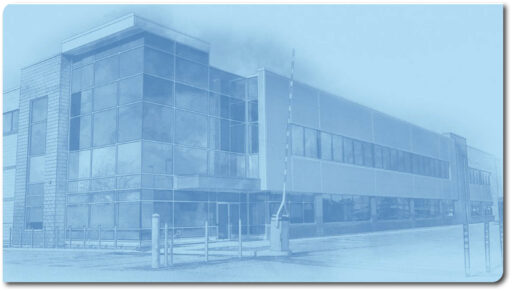Table of Experts: Industrial developers
 Industrial development and investment sales are simmering down after an explosive period driven by COVID supply chain challenges
Industrial development and investment sales are simmering down after an explosive period driven by COVID supply chain challenges
Triangle Business Journal
November 24, 2023
COVID had a profound impact on industrial development in 2020 and 2021 as consumers shifted to shopping online and retailers scrambled to meet demand. Logistics partners re-designed supply chains to more efficiently serve customers, driving demand for more industrial and logistics space.
In the Triangle, rents grew as much as 20% year over year.
Those good times are showing signs of levelling off as the industry and its investors adjust to higher land costs, higher interest rates, and uncertainty about where the Fed’s headed next.
Despite the challenges, Justin Parker, vice president and Triangle market leader for multi-asset class design-build developer Al. Neyer, says the local market continues to benefit from population growth, world class universities and a diverse economy. The company has a strong track record of industrial projects in the Triangle since entering the market in 2019.
“The single biggest ingredient in our success here has been our local presence and growth in the market itself,” Parker says. “This is still a relationship business, and when do those relationships count most? They count most when it gets hard, and it’s hard right now.”
Parker made his comments as part of a discussion hosted by the Triangle Business Journal exploring trends in industrial development. Joining Parker in the conversation was Hunter Willard, executive vice president of Colliers International, and Hunter Stewart, vice president and principal at Lee & Associates, a commercial real estate broker. Jason Christie, president and publisher of the Triangle Business Journal, moderated the discussion.
On fast-growing submarkets
The post COVID industrial frenzy drove growth in several Triangle submarkets, including the 40-85 corridor, Southeast Wake and Johnston counties, in Garner and the U.S.-1 South corridor.
Growth in Chatham County is fueled by the introduction of the sprawling Chatham Park, along with VinFast electric vehicle manufacturing site, which broke ground in July at Triangle Innovation Point.
Colliers and Al. Neyer teamed up in the 40-85 corridor to build some of the first spec industrial there, a market that had historically been a build-to-suit market. The proximity to Research Triangle Park, the labor force of both the Triangle and Greensboro and available infrastructure make it a strong corridor, Parker says.
“We were a first mover working with Hunter Willard’s team at Colliers building spec industrial on the 40-85 corridor at Buckhorn Industrial Park in Mebane and Haw River Distribution Center in Graham,” Parker says.
Likewise, Southeast Wake County and Johnston County have been strong submarkets. The markets benefit from connectivity to U.S. 70 and I-95. Al. Neyer has a speculative project at Brogden Industrial in Smithfield leased by Austin Nagy & Ann-Stewart Patterson of CBRE and is building a fifth building at Garner Business Park having fully leased four buildings partner with Ed Brown & Daniel Herring with Tri Properties on leasing.
Stewart says the Triangle’s density of talent, high quality of life, and the well-established reputation of RTP attracted life science companies during the pandemic, eventually creating a cluster. This tremendous influx in turn created pricing pressure which pushed other tenants to submarkets, especially Garner.
“Life science came in and basically pushed all those traditional flex and industrial users we’ve worked with for the last 15 years out. Submarkets like Garner were the next obvious fit,” Stewart says.
U.S. 421 and Hwy. 64 are likely the next corridors for growth stretching all the way to Sanford, he says.
On the impact of large projects
The Triangle area and just beyond has landed a number of mega-deals in recent years, which are poised to impact the industrial market by attracting ancillary suppliers and other manufacturers.
Alongside VinFast, other major projects include Wolfspeed’s plans to build a $5 billion factory in western Chatham County to manufacture semiconductors, and Toyota’s $13.9 billion investment near Greensboro to produce lithium-ion batteries for its electric vehicles.
So far, industrial developers haven’t felt the full impact, but it’s early.
“Obviously they’re still in the early stages, VinFast and Wolf Speed are laying infrastructure now,” Stewart says. “Toyota is significantly ahead of both of them in the process and we’ve seen the impact of secondary users needing adjacency. As the other projects progress, we can expect to see the same outgrowth effects.”
